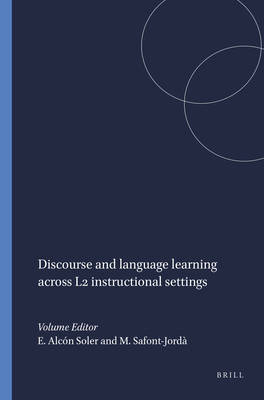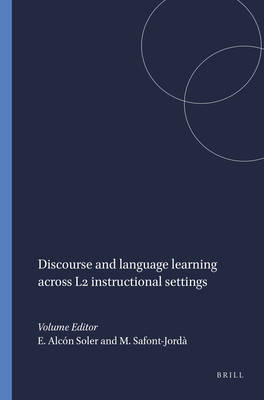
- Afhalen na 1 uur in een winkel met voorraad
- Gratis thuislevering in België vanaf € 30
- Ruim aanbod met 7 miljoen producten
- Afhalen na 1 uur in een winkel met voorraad
- Gratis thuislevering in België vanaf € 30
- Ruim aanbod met 7 miljoen producten
Zoeken
Discourse and language learning across L2 instructional settings
€ 172,95
+ 345 punten
Omschrijving
Studies on discourse and language learning originated in the field of general education and they focused on first language learning environments. However, since 1980s research on discourse and language learning broadened the scope of investigation to respond to second and foreign language environments. Recently, the emergence of new language learning contexts such as computer mediated communication, multilingual settings or content and language integrated contexts requires further research that focuses on discourse and language learning. From this perspective, the present volume aims to broaden the scope of investigation in foreign language contexts by exploring discourse patterns in the classroom and examining the impact of factors such as gender, explicitness of feedback or L1 use on language learning through discourse.With that aim in mind, this volume will bring together research that investigates discourse in various instructional settings, namely those of primary, secondary and university L2 learning environments, content and language integrated contexts and other new language learning settings. The number and variety of languages involved both as the first language (e.g. English, Finnish, Basque, Spanish, Japanese, French, Italian, Catalan) as well as the target foreign language (e.g. English, French, Italian, Japanese, Spanish) makes the volume specially attractive. Additionally, the different approaches adopted by the researchers participating in this volume, such as information processing, sociocultural theory, or conversation analysis, widen the realm of investigation on discourse and language learning. Finally, the strength of the volume also lies in the range of educational settings (primary, secondary and tertiary education) and the worldwide representation of contributors across seven different countries, namely those of Spain, France, Austria, Finland, Germany, Canada, Australia and the United States.The uniqueness of the volume is due to its eclectic and comprehensive nature in tackling instructional discourse. Worldwide outstanding researchers, like Julianne House, Carme Muñoz, Ute Smit, Tarja Nikula or Roy Lyster, to quote but a few, adopt different perspectives in this joint contribution that will certainly broaden the scope of research on language learners' discourse.
Specificaties
Betrokkenen
- Uitgeverij:
Inhoud
- Aantal bladzijden:
- 332
- Taal:
- Engels
- Reeks:
- Reeksnummer:
- nr. 24
Eigenschappen
- Productcode (EAN):
- 9789042035843
- Verschijningsdatum:
- 1/01/2012
- Uitvoering:
- Paperback
- Formaat:
- Trade paperback (VS)
- Afmetingen:
- 155 mm x 234 mm
- Gewicht:
- 458 g

Alleen bij Standaard Boekhandel
+ 345 punten op je klantenkaart van Standaard Boekhandel
Beoordelingen
We publiceren alleen reviews die voldoen aan de voorwaarden voor reviews. Bekijk onze voorwaarden voor reviews.







